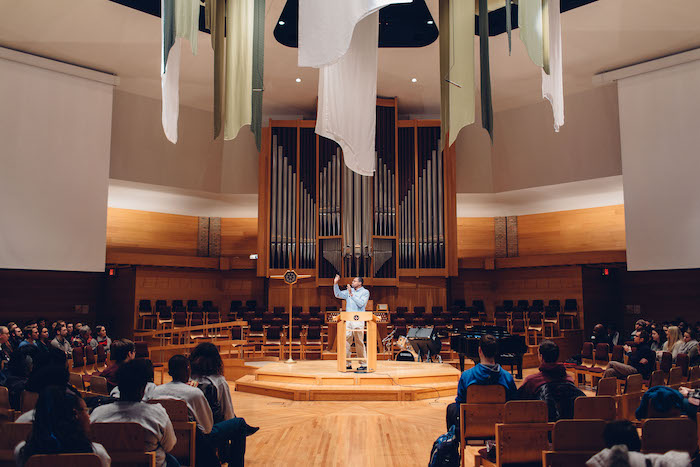A watershed is an area of land, naturally delineated by topography, where all the water drains to the same place. Watersheds should connect communities, as water flows from the headwaters to the lower reaches and carries the effects of land use with it: surface runoff, flooding, erosion, and more. Communities that work together to protect the waterways, in essence show respect for their downstream neighbors.
Plaster Creek
The Plaster Creek Watershed occupies approximately 58 square miles, all in metropolitan Grand Rapids, Michigan. The creek itself is about 27 miles long. Its headwaters originate south and east of Grand Rapids, with many of its tributaries coming from agricultural areas around Dutton and Caledonia. The creek flows through commercial and residential areas of the city, and finally through industrial areas and low-income neighborhoods before emptying into the Grand River a mile south of downtown Grand Rapids. By the time the creek enters the Grand River it is considered one of the most impaired waterways in West Michigan. For more information, view The Story of Plaster Creek, an interactive GIS database of the watershed created by the Geology, Geography, and Environmental Studies department.

History of the Plaster Creek Watershed
The Wisconsin ice sheet receded northward out of West Michigan for the last time around 16,000 years ago. As it did so, this mass of ice left a rolling landscape of mixed soils, sand, gravel, silt, and clay. The Great Lakes were formed at this time, along with the basins and sub-basins that drained into these lakes.
By the time the first European explorer Samuel de Champlain reached West Michigan in 1615, the Odaawaa Indians (today known as the Ottawa) occupied the Plaster Creek Watershed and called this stream Kee-No-Shay, which means "water of the walleye."
In the early 1800s the local Odaawaa tribe’s leader, Chief Blackbird, lived in an area today known as the Black Hills neighborhood, a prominent knob of land in the Grand River floodplain that overlooks the final reach of Plaster Creek before it joins the Grand River. A story recorded by Charles Belknap, one of the earliest mayors of Grand Rapids, recounts a disagreement between Chief Blackbird and a local missionary about the best place to encounter God. Chief Blackbird maintained his people worshipped the Great Spirit best outdoors, and thought it odd that the missionary was trying to convince the Chief’s people to come inside a building and look into a book to meet God.
One day, Chief Blackbird and the missionary travelled in a small boat up Kee-No-Shay Creek until they reached a beautiful waterfall pouring over a large, colorful, and crystalline outcrop of gypsum. Chief Blackbird explained to the missionary that he and his people met their God in sacred spaces like this one.
This was also the first known encounter of European immigrants with gypsum in West Michigan, a rock quickly recognized as a resource to be mined throughout the Grand Rapids area. New settlers used ground up gypsum as both a fertilizer and as a base for making plaster for construction. In fact, the first plaster mill in West Michigan was set up at a location near Chief Blackbird’s sacred spot in 1841. Soon after, the creek became known as ‘Plaster Creek,’ as the extensive gypsum mining caused the creek to become so degraded it was no longer able to support walleye.
As the city of Grand Rapids developed and expanded, the quality of Plaster Creek progressively declined. Several of the creek’s tributaries were put in underground pipes, including a 4-mile stretch of Silver Creek—one of Plaster Creek’s two major tributaries. By the early 2000’s, the creek was West Michigan’s most polluted stream, often carrying bacterial loads so high it was unsafe for wading and swimming. In other words, people could get sick from simply touching the water.
Welcome to your watershed: Townships
Township officials make decisions to protect the quality of life for current and future township residents. These individualized portfolios help township officials understand the needs of healthy watersheds in their communities. These downloadable brochures explain why land use decisions in the townships should be made with careful consideration of their impact on waterways like Plaster Creek and provide helpful ideas for protecting freshwater resources for everyone.






